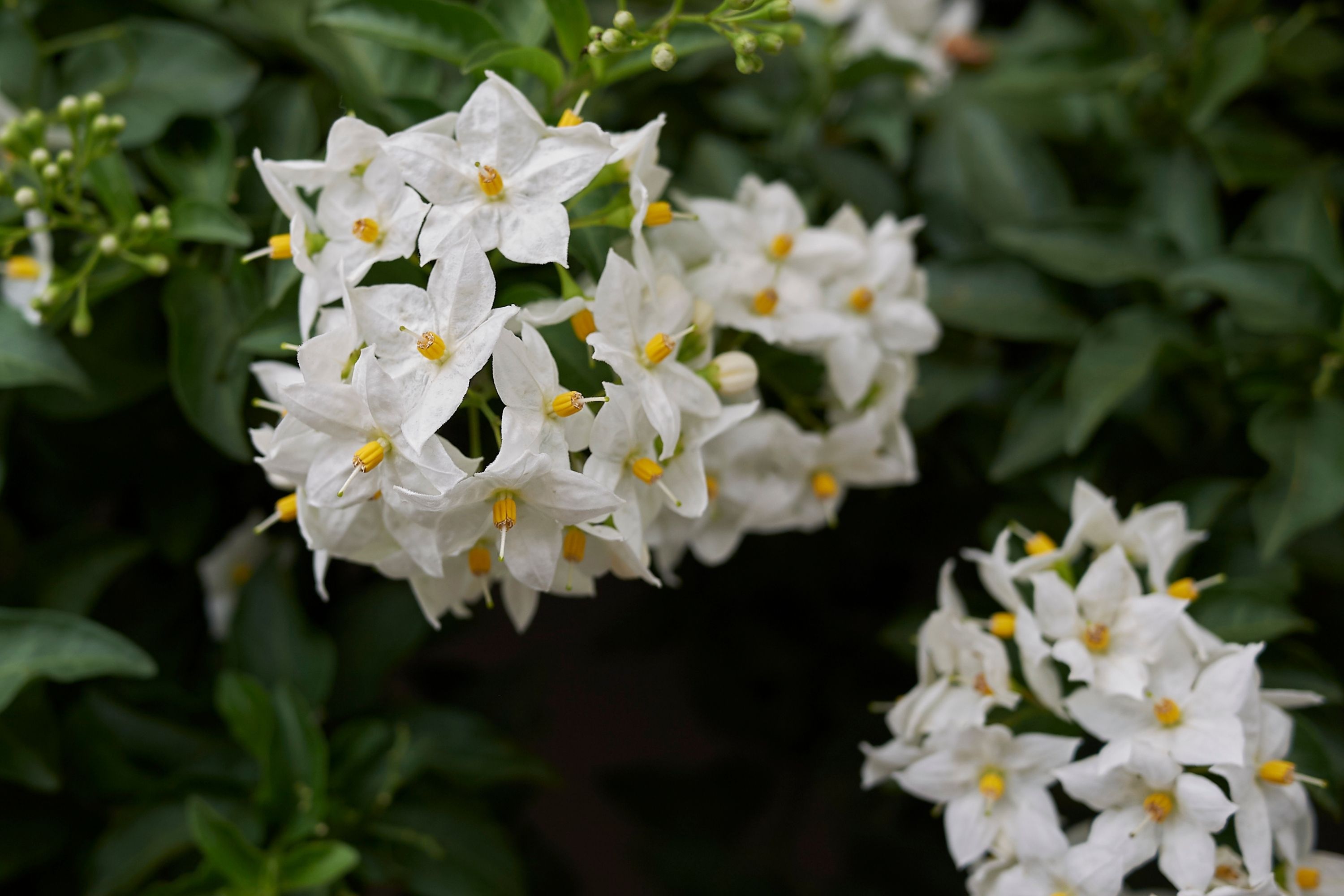Potato vine
(Solanum laxum)

Description
Solanum laxum, commonly known as the potato vine, is a perennial evergreen climbing plant native to South America. The species belongs to the Solanaceae family, which also includes tomato, pepper, eggplant, and other important crops. In this article, we will explore the physical characteristics, growing conditions, cultivation methods, and potential uses of Solanum laxum. Physical Characteristics Solanum laxum is a woody vine that can reach up to 10 meters (33 feet) in length. The plant has green leaves that are large, ovate to lanceolate in shape, and covered with fine hairs. The flowers are star-shaped, white to pale blue in color, and have a yellow center. They grow in clusters and are highly fragrant, attracting pollinators such as bees and butterflies. The plant produces small, green, egg-shaped fruits that turn yellow when they ripen. These fruits are not edible and may even be toxic to humans and pets. Growing Conditions Solanum laxum is a tropical plant that thrives in warm, humid environments. It can tolerate temperatures between 10°C and 40°C (50°F to 104°F) and prefers well-drained soils with a pH between 6.0 and 7.0. The plant requires full sun exposure to grow and flower properly, although it can also tolerate some shade. Solanum laxum is a fast-growing vine that requires support structures such as trellises, arbors, or fences to climb. Cultivation Methods Solanum laxum can be propagated by seeds or cuttings. Seeds should be sown in a well-draining soil mix and kept moist until they germinate. Cuttings should be taken in the early spring or fall and rooted in a mixture of sand and peat moss. The plant can be grown in containers or directly in the ground. When planting in the ground, dig a hole that is twice as wide and deep as the root ball and backfill with a mixture of soil and organic matter such as compost or aged manure. Solanum laxum requires regular watering, especially during the hot and dry season. However, it is important not to overwater the plant, as this can lead to root rot. Pruning is necessary to keep the plant from becoming too invasive and to promote branching and flowering. Cut back the stems to a third of their length in late winter or early spring before new growth appears. Potential Uses Solanum laxum is primarily grown as an ornamental plant for its attractive flowers and foliage. It is commonly used to cover walls, fences, and trellises or as a groundcover in landscaping. The plant is also popular in container gardening, where it can be trained to grow as a topiary or trained onto a wire frame to create a unique form. In addition to its ornamental value, Solanum laxum has some medicinal properties. The plant contains solasodine, a steroidal alkaloid that has been used to treat skin cancers and other dermatological conditions. However, it is important to note that Solanum laxum is also considered an invasive species in some parts of the world, such as New Zealand and South Africa. The plant can easily spread and displace native vegetation, so it should be grown with caution and kept under control. Conclusion Solanum laxum, also known as the potato vine, is a fast-growing climbing plant that is valued for its attractive flowers and foliage. The plant requires warm, humid conditions and full sun exposure to grow and flower properly. It can be propagated by seeds or cuttings and requires regular watering and pruning to maintain its shape and size.
Taxonomic tree:







